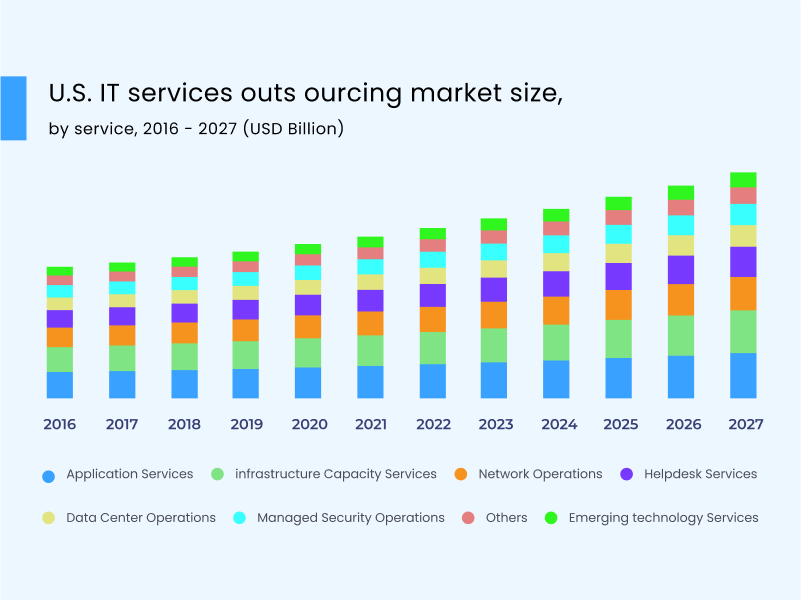Did you know?
As per a report, The global IT services outsourcing market is estimated to grow by $937.67 billion at a CAGR of 7.7% by 2027.
Businesses of any size look for ways to become more efficient and save money. One integral way to achieve this is by outsourcing specific projects to a third party.
There are three cooperation models that you can consider for outsourcing your project. These are staff augmentation, project outsourcing, and managed services.
These models help you outsource your valuable projects to professionals with in-depth knowledge of specific domain areas.

However, making the right decision can be difficult. You have to weigh each option’s pros and cons and decide which will be the best for your business.
Today, we have come up with an extensive comparison of each model, i.e., staff augmentation vs managed services and project outsourcing vs staff augmentation, along with pros and cons.
You can go through each model’s comparative analysis, advantages, and disadvantages and choose which could be the right option for your project.
Here we go!
Staff Augmentation

Staff augmentation refers to hiring developers for specific projects. It is a strategy where external vendors provide IT-related services to companies.
Moreover, it works as an extension to the existing team, with outsourced software developers working alongside and complementing their in-house skills counterparts.
IT Staff Augmentation is usually faster than hiring full-time employees because there are no advertising campaigns, time involved in interviewing candidates, or staff recruitment training.
In addition, the IT staff augmentation companies acquire people who have already been screened and approved.
The significant advantage of IT Staff Augmentation is the possibility of hiring only the necessary number of employees for a short time. This strategy enables companies to adapt their workforce requirements dynamically without investing too much money in new employees.
IT Staff Augmentation reduces software development costs because it can be more efficient than full-time employees. This strategy enables companies to achieve project objectives without overspending on IT staff hiring.

